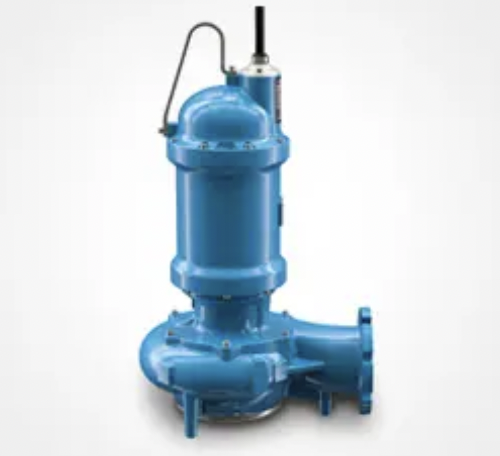Upgrading Your Pump System
Why Replace with a Barnes Pump
Few components are as crucial to operations as pumps. Among them, the Barnes Pump stands out for its efficiency, reliability, and durability. However, even the most robust machinery can falter over time, necessitating replacement to ensure uninterrupted workflow and prevent costly downtime.

Pompano Beach

Get a Barnes Pump
Barnes Pump
Renowned for its robust construction and high-performance capabilities, the Barnes Pump serves a multitude of applications across various industries, including wastewater treatment, chemical processing, oil and gas, and more. Its ability to efficiently move fluids makes it indispensable for maintaining operational efficiency and productivity.

Signs of Barnes Pump Degradation
Despite its reputation for reliability, the Barnes Pump is not immune to wear and tear. Over time, various factors such as prolonged usage, inadequate maintenance, and environmental conditions can contribute to its degradation. Recognizing the signs of pump deterioration is crucial for preemptively addressing issues before they escalate into major problems. Common indicators include:
Decreased Performance
A noticeable drop in pump efficiency, reflected in reduced flow rates or increased energy consumption, signifies potential issues with internal components.
Unusual Noises
Uncharacteristic noises such as grinding, rattling, or whining during pump operation may indicate mechanical problems or worn-out bearings.
Leakage
Any signs of leakage, whether from seals, fittings, or pump casing, suggest compromised integrity and require immediate attention to prevent further damage.
Vibrations
Excessive vibrations during pump operation are often indicative of misalignment, worn impellers, or bearing failure, necessitating thorough inspection and possibly replacement.
Age and Maintenance History
As with any mechanical equipment, the age of the Barnes Pump and its maintenance history serve as crucial factors in determining the likelihood of replacement. Older pumps with inadequate maintenance are more susceptible to failure and may warrant replacement sooner.
Why Replace the Barnes Pump?
The decision to replace a Barnes Pump should not be taken lightly but rather based on a comprehensive assessment of its condition, performance, and cost-effectiveness. While routine maintenance and repairs can extend the lifespan of the pump, there are situations where replacement becomes the most viable option:
Irreparable Damage
In cases of severe damage or extensive wear beyond repair, replacing the Barnes Pump is the most practical solution to restore operational efficiency.
Obsolete Technology
Advancements in pump technology may render older Barnes Pump models obsolete, making replacement necessary to leverage the benefits of newer, more efficient systems.
Rising Maintenance Costs
As pumps age, maintenance costs tend to escalate due to increased frequency of repairs and replacement parts. In such instances, investing in a new pump may offer long-term cost savings.
Changing Operational Requirements
Shifts in operational demands, such as increased capacity or changes in fluid properties, may necessitate upgrading to a more suitable pump model capable of meeting current requirements.
How to Replace the Barnes Pump
Replacing a Barnes Pump requires careful planning, expertise, and adherence to best practices to ensure a seamless transition and minimize downtime. Follow these steps for a successful pump replacement:
Assessment and Planning: Begin by conducting a thorough assessment of the existing pump system, including its condition, performance metrics, and compatibility with replacement options. Based on the assessment, develop a comprehensive replacement plan outlining the scope of work, timeline, and resource requirements.
Selection of Replacement Pump: Choose a suitable replacement pump based on the specific requirements of the application, taking into account factors such as flow rate, head pressure, fluid compatibility, and energy efficiency. Consult with pump specialists or engineers to identify the most appropriate replacement option.
Preparation and Disconnection: Prior to replacement, shut down the existing pump system and disconnect all electrical and plumbing connections. Safely drain any remaining fluid from the system and remove the old pump from its mounting location.
Installation of New Pump: Carefully install the replacement pump following manufacturer guidelines and industry standards. Ensure proper alignment, secure mounting, and tight connections to prevent leaks or vibrations. Verify that all electrical and plumbing connections are correctly reestablished.
Testing and Commissioning: Once the new pump is installed, conduct thorough testing to verify its performance and functionality. Monitor key parameters such as flow rate, pressure, and power consumption to ensure optimal operation. Make any necessary adjustments or fine-tuning to optimize performance.
Training and Maintenance: Provide comprehensive training to personnel responsible for operating and maintaining the new pump system. Establish a proactive maintenance schedule to ensure ongoing reliability and performance optimization. Regularly monitor the pump’s condition and address any issues promptly to prevent costly downtime.
The decision to replace a Barnes Pump should be guided by a thorough assessment of its condition, performance, and operational requirements. While the prospect of replacement may seem daunting, especially in critical industrial applications, proper planning, and execution can streamline the process and mitigate risks associated with downtime and operational disruptions. For businesses in Florida seeking professional assistance with pump replacement and maintenance, Southeastern Pump stands out as a trusted partner with a proven track record of delivering reliable solutions tailored to specific needs. With their expertise and commitment to excellence, Southeastern Pump ensures seamless pump replacement and ongoing support to optimize operational efficiency and productivity.
Pompano Beach


